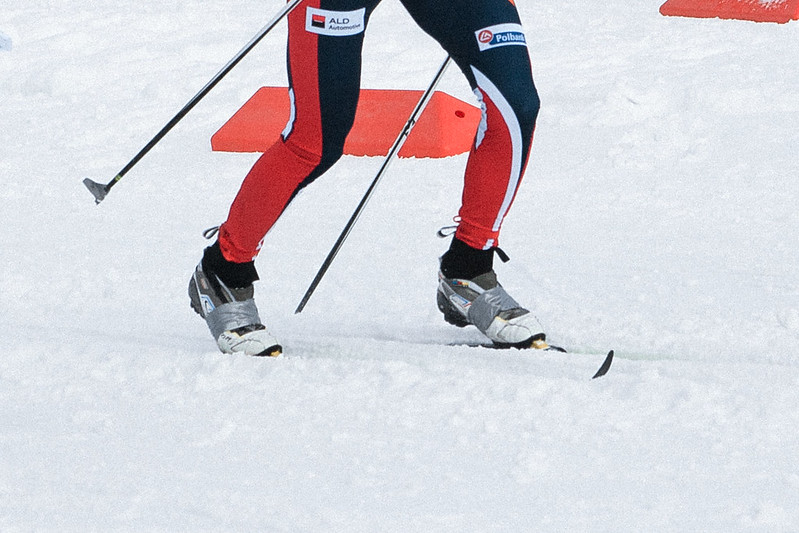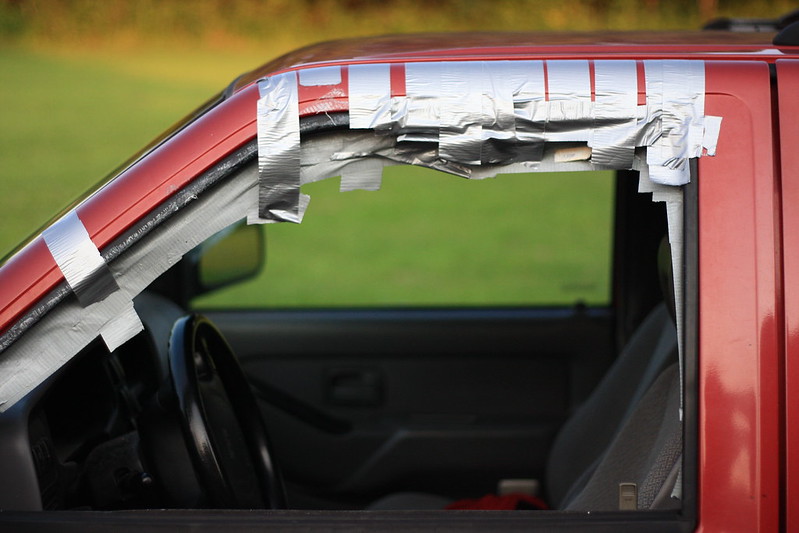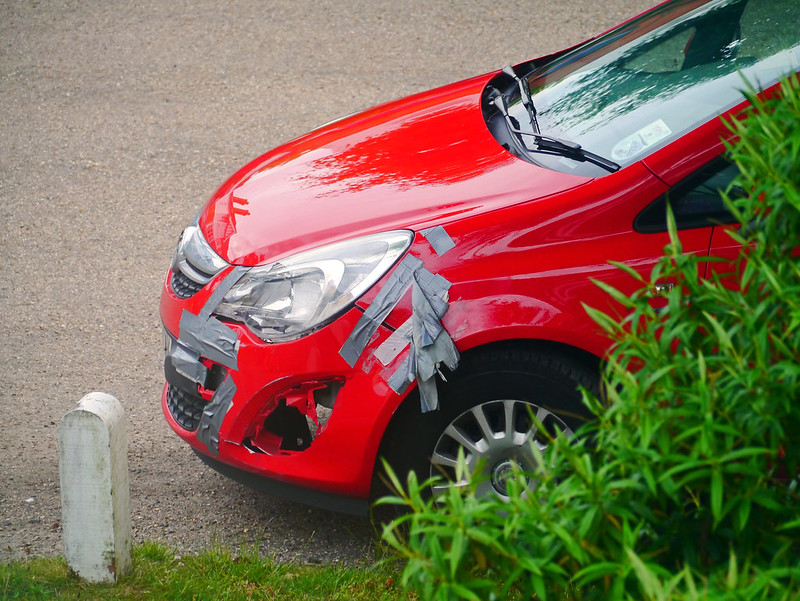3D printing as a technology is increasingly used as duct tape in an industrial environment. The silver-gray cloth adhesive tape is strong and tough, wear and water-resistant, and can be applied to solve any and all manner of problems. Originally adhesive applied to strong cotton duck cloth was used for paint canvases, this tape is a necessary addition to many DIY-ers and professional installers arsenals.

From Wikipedia,
The ultimate wide scale adoption of duck tape, today generally referred to as duct tape, came from Vesta Stoudt, an ordnance-factory worker and mother of two Navy sailors, who worried that problems with ammunition box seals would cost soldiers precious time in battle. She wrote to President Franklin D. Roosevelt in 1943 with the idea to seal the boxes with a fabric tape, which she had tested at her factory. The letter was forwarded to the War Production Board, which put Johnson & Johnson on the job. The Revolite division of Johnson & Johnson had made medical adhesive tapes from duck cloth from 1927 and a team headed by Revolite’s Johnny Denoye and Johnson & Johnson’s Bill Gross developed the new adhesive tape, designed to be ripped by hand, not cut with scissors.

One of the key elements of duct tape is that it is easy to apply precisely, easy to cut by hand or mouth, and that it can be removed. It’s a solution that can be customized for fit or purpose with relatively little means, a temporary fix that serves well and can be removed well.
In contrast, Scotch tape can be removed without so much as a trace, but would not be as tough or strong as duct tape. Superglue ties together many things, but only along fault lines and is difficult to remove or undo. Soldering would also work well for many problems, requires more tools to implement, is more difficult to undo, and does not work on so many different materials. Welding can also work, but not on everything, and it is very difficult to undo and requires tools.
As with Goldilocks and her favorite bed or bowl of porridge, duct tape is just the right solution. What’s more, it’s just the right solution for many new and unknown problems. One of the most valuable things about duct tape is that you can apply it to new problems and new materials in new situations. In the face of the unknown and Murphy’s Law, duct tape is the go-to fix because it works widely and its application is reversible. Duct tape may not work, but it will also probably not make the problem worse.

Lately, in the industrial and manufacturing arena, I’m seeing more and more examples of 3D printing being used as a duct tape for all manner of solutions. 3D printing, after all, is a versatile, low-cost solution that can be implemented quickly. We are also easily reversible, and our parts are just tough enough to last in many cases. This is a very significant development.
In flow, manifolds, valves, machine building, aviation and on the factory floor, generally we can see a lot of bottom-up solutions make their way to manufacturing. Top-down projects that are CEO-driven often collide with reality when they meet the nitty-gritty of the factory floor and have to be implemented by people who don’t see the value in disrupting their perfectly ordinary working lives.
Well-scoped 3D printing projects may be successful in businesses, but then either their value will be seen as limited or the cost will be high. This is the “3D printed bracket” problem, where we made a 3D printed part that demonstrates everything well and works, but with an inordinate amount of effort and cost. Translating this situation into one where business and engineering leaders demand our technology is difficult. In these cases, we’re often seen as a fanciful, future cool thing not grounded in any business reality.
What does work is if the outcome of a limited project or a CEO-driven project is so advantageous as to make it strategic for the firm. For example, “we can make better orthopedics that give better patient outcomes and faster at one-tenth of the cost.” Even then, we can see a decade of lag between a proof point and companies retooling around additive.

The one approach that has consistently worked in implementing 3D printing, however, is the bottom-up approach. In this case Dieter has an Ultimaker at home and brings a jig to the office at Volkswagen to show the guys. It’s tested in a relatively rule- and regulation-free part of the floor and operation. Then, slowly, in a drip fed way implemented across the organization.
This is beautiful. Here, we’re not ruffling feathers or up against institutional resistance, but we’re making everyone’s lives easier. There are many examples of these kinds of improvised solutions becoming successful and even leading to print farms with hundreds of desktop machines making many different parts.
But, what do we as an industry do? We all start writing about jigs and fixtures. Duck tape was initially used for ammo boxes and later pitched at people repairing heating ducts, but it’s in becoming an-almost-everything solution that it becomes the most valuable.
Instead of pitching jigs and fixtures, we should be pitching our technology itself as a versatile problem solver for the factory floor. 3D printers should be a solve-any-part-problem device. Does your problem have an object as the solution? Use 3D printing. We should be the go-anywhere technology that you need to have to tackle the unknown. I never know what I’m going to use duct tape for but I have it just in case. That kind of need-it-for-the-unknown is a good driver for 3D printing. Why, ma’am, the killer app is the technology itself.
Analogous to this: computers were used as word processing machines, but very much were understood to be universal calculation machines whose functionality could be expanded significantly. Likewise, we should be universal making machines that you need to have just like you have duct tape.

Some examples from industry:
- A factory door slams open and closed because it has been placed in an impossible corner where a door closer would not fit. 3D printed door jams keep the door from opening and closing too far.
- A lab has stations with specific tests per station. Storage dividers are printed where everything for each test fits precisely in its rightful place.
- A laser cutter for steel sheets of two by three meters used a chain for conveyancing and a chain guard to keep it in place. A simple PLA copy of this chain guard meant that the factory could get this out-of-production spare part.
- In order to place a number of boxes precisely on a pallet, a worker designs and prints a “pallet jig” that they can slam the boxes up against while knowing that they’re in place.
- On a bottle line, a sharp curve means that one-in-a-million bottles fall off the line. A small 3D printed fix keeps this from happening.
- A food line has new sensor upgrade. In order to place the new sensors correctly, 3D printed holders are used.
- Teams in this building often have to move large objets in an elevator and keep it open as these items are rolled in. A small catch is 3D printed that covers the elevator sensor to keep it open.
- A high-mix, low-volume manufacturer gets an order for a limited number of parts. The team uses 3D printing for stays and other packaging elements so that this unique series of tools can be shipped safely.
- A vehicle manufacturer is not cost competitive for a certain tender of police vehicles. Through a mistake, they win the tender anyway at a price that would make them bleed. The team scrambles to 3D print any manner of parts to make this endeavor less painful for then in the end .
- For a solar panel project, a very specific set of tools has to be made. Not only are some tools casted with the help of 3D printed intermediates, but the packaging is printed and indicates which tool is which.
- A specced motor is not available for one production run and the client doesn’t mind if it is replaced by a new motor. New housings and small parts are printed to integrate it.
- A client is worried that a newer battery technology could come out and make the assembly outmoded. An upgrade kit is shipped with the product so that the customer has the confidence that she can shift when the time comes.
- A customer wants a customized version of a tractor for one particular use case. With 3D printed molds and 3D printed parts, it can be made unexpectedly.
- For a remote petrochemical facility, a number of qualified parts can be printed but the team soon enough finds new uses for the machine.
- For a window manufacturer, full-sized windows have to be replicated so that the team can verify if they can be installed.
- A machine manufacturer has a very small number of orders for another voltage. 3D printing can accommodate the necessary changes.
- A high-value order for a series of custom fridges comes in. A team works quickly so that it can demonstrate a prototype quickly to close the deal.
- A tooling delay means that initial shipments of a product will be delayed. Using 3D printing in-house and external parts, a team makes the first versions by hand to give to press, resellers and initial clients.
One could classify all of these cases as examples of 3D printed spare parts, bridge manufacturing, prototyping, tooling or other applications. This may make sense for your website’s sub-navigation, but obscures one of the best reasons to deploy our technology. Regardless of your application or industry, we are industrial strength duct tape for you. 3D printing can be used to solve all manner of unforeseen problems. Through unlocking your creativity, 3D printing can be a versatile problem-solving technology that will have you successfully meet the unforeseen.
Images Mike Mozart, seebamirum, Rojer, alx_chief, mic, Oskar Karlin.
Subscribe to Our Email Newsletter
Stay up-to-date on all the latest news from the 3D printing industry and receive information and offers from third party vendors.
You May Also Like
Gorilla Sports GE’s First 3D Printed Titanium Cast
How do you help a gorilla with a broken arm? Sounds like the start of a bad joke a zookeeper might tell, but it’s an actual dilemma recently faced by...
Nylon 3D Printed Parts Made More Functional with Coatings & Colors
Parts 3D printed from polyamide (PA, Nylon) 12 using powder bed fusion (PBF) are a mainstay in the additive manufacturing (AM) industry. While post-finishing processes have improved the porosity of...
$25M to Back Sintavia’s Largest Expansion of Metal 3D Printing Capacity Since 2019
Sintavia, the digital manufacturing company specializing in mission-critical parts for strategic sectors, announced a $25 million investment to increase its production capacity, the largest expansion to its operations since 2019....
Velo3D Initiates Public Offering in a Bid to Strengthen Financial Foundations and Drive Future Growth
Velo3D (NYSE: VLD) has been among a number of publicly traded 3D printing firms that have attempted to weather the current macroeconomic climate. After posting a challenging financial report for 2023,...





























